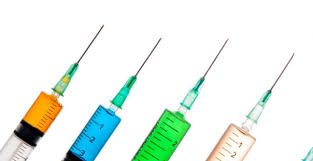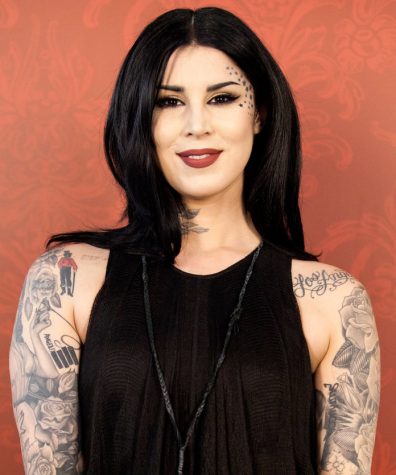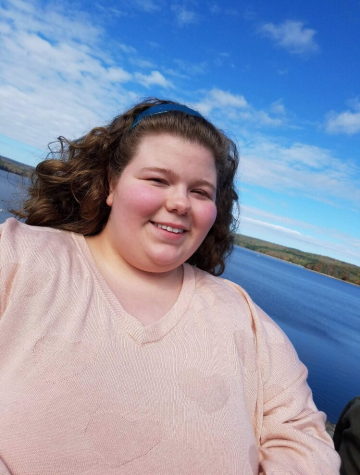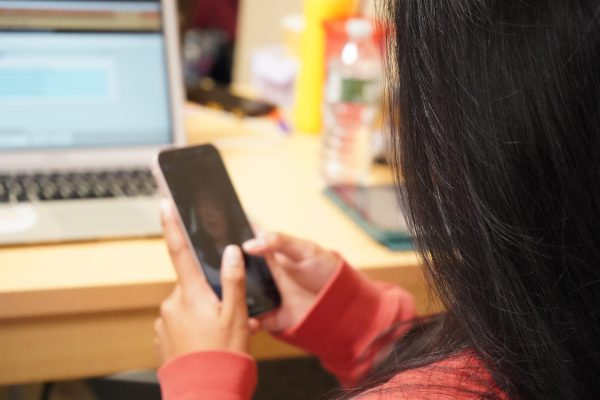The Birth of the Modern Anti-Vaccination Movement

The modern anti-vaccination movement has been a source of controversy and disagreement since its founding in the late 1990s.
According to a study published by Dr. Andrew Wakefield in Britain in 1998, there was a connection between the MMR vaccine and autism. His study was later disproven, and Wakefield’s data was found to be not only incorrect, but it was also found that he had accepted payment from a law practice to research possible connections between vaccines and autism for an ongoing lawsuit. The association was already created, thus beginning the trend of families refusing vaccinations out of fear, not only of autism, but also of other potentially dangerous, or even deadly side effects of vaccines.
Celebrity Influence Making an Impact
In the summer of 2018, celebrity tattoo artist and makeup entrepreneur Kat Von D announced her pregnancy on social media, and her plans to raise her child without vaccinations. An outpouring of controversy and discourse erupted in response, between pro-vaccination and anti-vaccination commenters. Von D had said, “We are not against vaccines. Just because we have hesitancies and valid concerns about injecting our baby with specific chemicals and toxins does not mean we are anti anything.”
Opinions and stances were shared from both sides in response to her post, re-sparking the debate and bringing it back to the forefront of current health debates.

An Outbreak Close to Home
This fall, there have been the largest number of reported cases of measles in Rockland County in decades, amounting to over 83 confirmed cases of Measles, according to Rockland County officials. The largest communities that have been affected are the orthodox Jewish communities, particularly around the towns of Monsey, and Spring Valley. The Measles outbreak is especially dangerous for high risk patients, particularly children who have not been given the MMR vaccination, immunocompromised and immunosuppressed individuals, pregnant women, and children under the age of six months.
According to the New York State Department of Health (NYSDOH), “Measles is a serious respiratory disease that causes a rash and fever. It is very contagious. You can catch it just by being in a room where someone with measles coughed or sneezed.”
Some of the side effects of measles are: runny nose, cough, high fever, red watery eyes/conjunctivitis, and a rash that starts at the hairline and runs down the face toward the body, says the Department of Health.
One of the factors that makes measles so contagious is the period in which it is contagious. According to the NYSDOH, “A person with measles can pass it to others from four days before a rash appears through the fourth day after the rash appears.”
Measles can cause many complications and negative effects, such as pneumonia, brain damage, or in severe cases, death. The New York State Department of Health recommends that in order to prevent contracting measles, or experiencing any of the aforementioned complications and effects, that everyone should be given two doses of the MMR (Measles, Mumps, and Rubella) vaccine, at least 28 days apart. Children are suggested to receive the vaccine between the ages of 12-15 months. The NYSDOH also recommends that children receive a second vaccine/booster between the ages of 4-6.
Marie – A Mom of Three
Marie is a mother of three girls in Westchester. Her oldest being ten years old, her middle child being eight years old, and her youngest is four. Marie knew shortly after finding out she was pregnant with her first child that she would want to have her vaccinated. “I spoke with my pediatrician, and we agreed on the right course of action for my family, which was the standard vaccines for my children. I did not see another option in a world where we have already cured so much with vaccines. I did not want to put my children through any unnecessary risks.”
Yet after sitting down wither husband and discussing vaccinations with her doctor, he took notice of what she considers the risks that came with them.
“ Our doctor was able to help put our minds at ease. I came to the realization that the chances of an adverse reaction to the vaccines were so small, especially in comparison to all of the benefits vaccines give, or even the negatives of the diseases the vaccines prevent.”
According to Marie, after her first child it was still a no brainer, her middle child and youngest child would both be vaccinated at the recommended pace, in order to protect them and ensure their safety.
Marie is a busy mom on the go, who works two jobs and looks after her three active children. “We are constantly running between places…School to work, soccer practice to dance class, errands to cooking dinner, there is never a dull moment in this house.”
According to Marie, “We wanted out kids to live the healthiest and most active lives they possibly could, and enjoy the active lifestyle they wanted to live, without being fearful of preventable diseases or sickness. I was vaccinated as a child. As were all three of my children, and so has my husband. The vaccines have given us the peace of mind to know that we are protected and safe from things like the chicken pox, mumps, or even measles.”
“There are so many factors that are out of your control when you are raising children, and if I can give them a vaccine when they are young that will protect them for the rest of their lives, I will. I can’t protect my kids against things like pediatric cancer, or car accidents or even natural disasters. But I can do everything within my power to protect my child from preventable diseases, like measles, mumps, rubella, and chicken pox. Thank god my children were vaccinated, there was a measles outbreak a few towns over, and I am so glad that I protected them. Measles can have such dangerous repercussions. How could I risk putting my babies through that? How could I gamble with their lives like that?”
Marie stands by her decision to vaccinate her children to this day, saying “I would rather my children be part of the 1% of kids who have the often treatable adverse reactions to vaccinations, then be the one in four children that ends up in a hospital after they get the measles with something as dangerous as pneumonia. More than anything, I just want my girls to be healthy and happy.”
Amy – A Mom of One
Amy is a local mother, with one child, a son who just turned two.
Amy started thinking, while she was pregnant with her son, about her decision on vaccinations. It wasn’t long before she realized that she didn’t want to rely on “artificial intervention” to help protect her baby bundle of joy. Amy and her husband both came to the agreement that they wanted to avoid vaccinating their son. According to Amy, “If I cut myself, my body will heal itself. It is something our bodies are meant to do. Out bodies are meant to heal themselves. I was not about to trust a one size fits all drug. I was not going to play Russian roulette with my little miracle that I just had.”
Amy works one full time job in the medical field, and is also a full time student and mother, who is finishing her master’s degree. She has written many papers about her beliefs on vaccinations, stating, “I am not against vaccines, I am against the additives or the doses of the vaccines. I am against the potentially harmful side effects, that range from redness and swelling, to seizures, to anaphylaxis. I also do not believe that vaccines cause autism, however I think some of their side effects can mimic autism.”
“I would rather my child get the chicken pox, and then heal, rather than get a vaccine that could have such detrimental or even deadly side effects,” Says Amy.
An additional issue Amy takes with vaccination is the need for things like VAERS, the Vaccine Averse Effect Reporting System which was created by the CDC and the FDA, and NVICP, the National Vaccine Injury Compensation Program. Amy was nervous to hear that entire organizations had to be created to deal with the amount of “averse effects” and compensations that are needed.
Amy was met with resistance on her decision by her first pediatrician. “He was the first pediatrician we took our son to see, and he made us feel terrible for our decision not to vaccinate. He used scare tactics and coercion to try to convince us to vaccinate our son, until we gave in, I and allowed him to give our son one vaccination, his HIB shot. My husband and I regretted it immediately, and out son had a softball sized lump on this thigh for three months afterwards. We soon switched to a new pediatrician, one who respects our decision not to vaccinate our son.”
Amy also recounts meeting resistance at her place of work, a medical office. When her views on vaccines were brought up among her peers and co workers, she received push back at work. “I no longer talk about it with any of my co workers. At work, if someone believes in vaccinations, I do not impose my views, I keep them privet. If anything, I push education. The only thing I push for is informed consent. I want parents to be aware of the risks that come with vaccinations.” Says Amy.
Amy’s biggest piece of advice: “You know your child and you know your gut. Its not for everyone, but not vaccinating is for us!” She continues by saying, “My son is healthy and thriving! He very rarely gets sick, and when he does, it runs its course and he feels better within a few days. We all want the same thing: We want our kids to be safe and healthy!”

Hope Androsko is a senior who is majoring in English at Mercy College. Hope’s goal is to become a journalist, editor, and English professor. She was...












